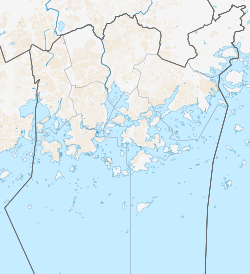You can help expand this article with text translated from the corresponding article in Finnish. (December 2009)Click [show] for important translation instructions.
|
Salmenkallio Sundberg | |
|---|---|
| Coordinates: 60°14′18″N25°10′09″E / 60.2384°N 25.1693°E | |
| Country | |
| Region | Uusimaa |
| Sub-region | Greater Helsinki |
| Municipality | Helsinki |
| District | Östersundom |
| Population | 40 |
| Subdivision number | 56 |
| Neighbouring subdivisions | Vuosaari, Mellunmäki, Östersundom, Talosaari, Vantaa |
Salmenkallio (Finnish), Sundberg (Swedish) is a subdistrict of Helsinki, Finland.

